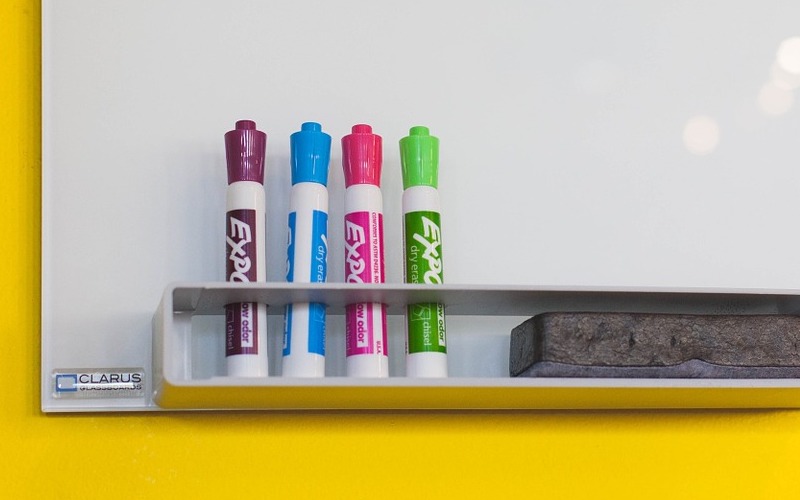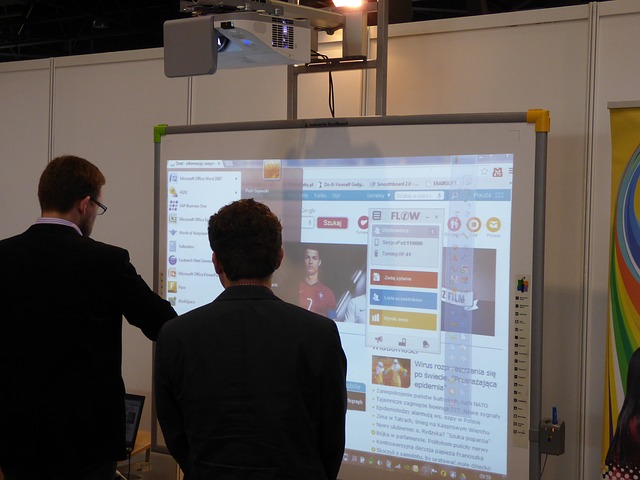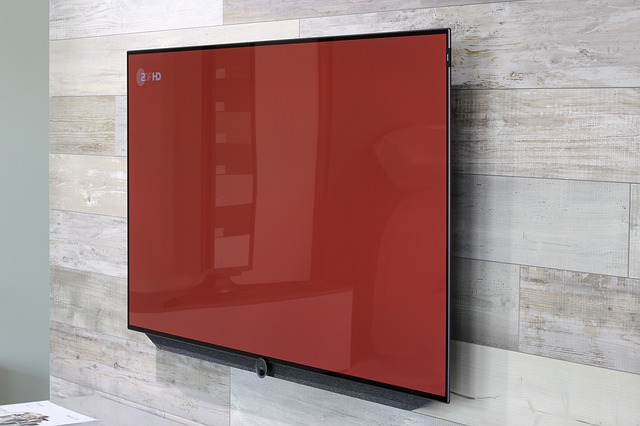
Classrooms and offices all over the world have come a long way since the use of traditional blackboards and chalk. Electronic whiteboards, which came with wipe-away markers, gradually replaced blackboards (they were invented in the 1960s but did not become widely used until the turn of the century).
However, there was still so much potential to present to a classroom or an office – and with the boom in technology, it was only a matter of time until a new hi-tech item took their place.
This is where interactive whiteboards came in. They were invented in 1991, but were an expensive luxury for quite some time. They were rolled out in schools and offices at the turn of the century – and in the last few years, have been commonplace in the education and work world. However, as with all technology, things are changing fast. The death of the interactive whiteboard is nigh, as people are finding themselves using replacements.
What are the downfalls of the interactive whiteboard?
Despite their past popularity, interactive whiteboards are losing momentum. Some of the key issues with them are:
Let’s look at the best interactive whiteboard alternatives for schools and companies of all sizes.
Non-Interactive Whiteboards

Some schools and businesses still utilise non-interactive whiteboards. While there are some advantages to using these – they are cheap whiteboards to use and run, are 100% reliable and don’t need any maintenance – in 2018, most schools and businesses should be using some kind of interactive display board. Why?
Technology in the classroom is incredibly important. Teachers who use it report a much higher student engagement and heightened skills. Likewise, offices who utilise technology generally have focused and engaged workers.
Some of the crucial advantages for using interactive whiteboards in the classroom and office are:
• Better, more complete display of student and worker projects which are all shown on one board
• More interaction and collaboration
• Memory functions
• Tools to recognise writing
• It is easier for students and meeting members to participate
So, unless a school or business is on a major budget, interactive whiteboards and their smartboard alternatives are the answer.
Another great incentive for using technology in the workplace is to consider businesses’ growing modernisation. As office spaces come into the future and workplace trends like huddle rooms increase in popularity, technology like interactive whiteboards and displays are becoming more and more essential. Huddle rooms encourage co-working and collaboration, which are key trends in the growing modernisation of businesses. Old-style smart whiteboards just won’t cut it here.
Interactive Projectors

These are an ideal solution for those wishing to save a little on their office hardware, yet not wanting to sacrifice the ease of having a technological tool. Ultra-short throw projectors perform pretty much the same function as interactive whiteboards.
At being just 45 centimetres from where they project an image, there is less obstruction and no glare. The stylus makes notes directly on the connected computer, meaning that work can easily be saved.
Despite ultra-short throw projectors being the most convenient, they are also the most expensive type of projector. Cheaper solutions that might be better for some schools and offices are short throw projectors, which can be placed 50 centimetres to one metre above the surface, or mid-range projectors which sit 2 – 3 metres infront of the surface.
Standard Projectors

Another, even cheaper, solution is a standard projector. These can be purchased in the ultra-short, short or mid-range throw capabilities as well. However, it is harder to interact with the screen. Data can be entered onto the connecting computer, or tools can be purchased to input directly onto the screen. Examples of these tools include:
• Motion sensing solutions
• Portable infrared USB and pens
• Projector with a secondary device
• Interactive drawing or desktop capture tools
These are external items that need to be purchased in addition to the standard projector. While a standard projector is cheap, the other items add up and make it more expensive. They also require maintenance and cleaning and replacement bulbs can prove costly.
Interactive Displays

Interactive displays (interactive whiteboard screens) are an alternative which eliminate many of the problems that interactive whiteboards and projectors face. When considering an interactive projector vs. an interactive display board, there are some crucial differences between the two. These should be assessed when office workers or teachers are deciding on which equipment is best for them.
The differences are:
• Interactive displays have a lot of similarities to iPads or tablets, meaning they are instantly familiar
• They don’t need an external computer to operate
• Displays offer crisp, high quality, bright images, keeping the audience engaged
• It is possible to use the interface with just a finger
Some of the beneficial qualities that interactive displays have include:
•Multiple points of simultaneous touch Vs single or dual touch for interactive whiteboards
• No lamp necessary Vs 2,000 to 8,000 use hours per lamp for interactive whiteboards
• Up to 50,000 hours life cycle with no decrease in brightness Vs interactive whiteboard’s brightness decreases constantly
• Very little cleaning required Vs interactive whiteboards which need regular cleaning
• No image shadows – even short throw interactive whiteboards cast a shadow
• A much higher resolution
Interactive displays’ huge benefit is that they can operate independently. Imagine a huge iPad on a wall – interactive displays are very similar to this. Avocor’s interactive displays are optimised for Windows 10, delivering a flawless, user-friendly experience.
The image quality is another huge benefit to using interactive displays. Projectors often give low quality, dark images; often the room needs to be in complete darkness to even see the screen! However, the brightness of interactive displays means that they can be used in the daylight. This makes them much more professional and convenient to use.
Another important difference is that interactive displays operate silently, whereas projectors need a fan. While this noise isn’t too intrusive, it can be cause for a distraction for some employees and students.
Interactive displays typically do cost more than interactive projectors. However, bulb changes for interactive projectors are pricey so the costs of running one soon adds up. Projectors also cost more in maintenance. While interactive displays are a bigger initial investment, they are much more durable and will be cheaper when you factor in maintenance costs.
Non-Interactive Displays

Another option is a non-interactive display. The polar opposite of a non-interactive whiteboard, this equipment is essentially a large television. It can display webpages, documents, presentations and photos but cannot be interacted with. The user must input details on the connected computer to be able to manipulate what is on screen.
While there are some places where a non-interactive display could be the most viable solution – somewhere that has purely presentational intentions might be able to use it – in most instances, teachers and office workers will require something that they can interact with.
So which is the best interactive whiteboard alternative for businesses and for schools?
We’ve looked at a range of interactive whiteboard alternatives here, both budget friendly ones and some of the best types on the market! For most businesses and schools, interactive displays deliver the most cost effective yet high performing solution. Avocor offer a range of interactive displays that are perfect for your business or school needs, with 4K screen resolution and optimised for Windows 10, Avocor interactive displays offer a instantly familiar platform, just like using a giant tablet on the wall.
Keep up to date with all the latest from Avocor and partners and get information on upcoming events and exciting product news.
Speak to one of our product specialists and find the perfect solution for you.